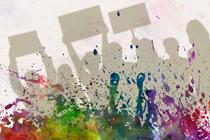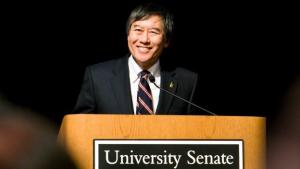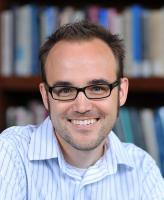By Ashley O'Connor, The Diamondback
Photo courtesy of Victoria Robinson
In light of the 50th anniversary of the National Endowment for the Arts and the National Endowment for the Humanities government agencies, a panel met with the University of Maryland's arts and humanities college to discuss the agencies' status and their place in the future.
Jane Chu, the 11th chairman of the National Endowment for the Arts, and William Adams, the 10th chairman of the National Endowment for the Humanities, joined Bonnie Thornton Dill, the arts and humanities dean, for the discussion Tuesday evening at the Gildenhorn Recital Hall in the Clarice Smith Performing Arts Center.
"We want all Americans to have an opportunity to be involved in the arts," Chu said.
Sheri Parks, the college's associate dean for research, interdisciplinary scholarship and programming, moderated the conversation in front of about 40 people.
Parks asked the panelists how they believe the arts and humanities can be better integrated in today's society, in which the arts are commonly cut out of school budgets. Entering her current position, Dill said, she had to explain the value it has for students, families and future generations.
Chu said a major problem in declining arts education programs is a lack of participation.
"Eleven million Americans want to participate in the arts, but don't," she said.
Many people who have mobility difficulties could have trouble getting to arts and humanities centers, or feel there are challenges to bringing kids to access the arts, but these barriers can be broken down, Chu said. She mentioned she would like to see arts programs implemented in all public schools.
It's important to show that art education not only provides a skill set, but can also be correlated with better performance in other classes, Chu said. For example, she said, a recent study revealed a correlation between art classes and higher grades in science classes.
"The pipeline is about making kids able to think wisely and be creative, not necessarily like the arts," Chu said.
Read more here.












